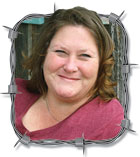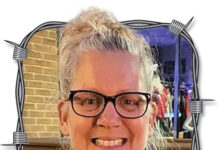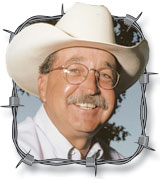I’ve been spending a lot of time at county fairs lately. I love checking out the livestock and catching up with friends I only see at fairs. Some of these friendships go back to when my friends were just youngsters checking in with me at my local county fair or the Missouri State Fair when I worked with the Missouri FFA Association. Now their children are showing at those same fairs.
These folks are my fair family, and I am always glad to see them.
There’s also the food you can only get at a fair. I love a good, greasy, deep-fried corn dog at a fair, and a funnel cake is always a go-to. Barbecued chicken on a stick? Yes, please. This year, however, I have refrained from those tempting delights; it’s just been too hot to eat.
Fairs have been a learning ground for me as well. I have had the opportunity to learn more about other livestock species and animals we didn’t have growing up. Have you ever watched a poultry or rabbit show? I still don’t understand it all, but I watch.
I first saw a Boer goat at the Missouri State Fair in the 1990s. It was the first year for the Boer show, and I remember thinking these were the wildest-looking goats I had ever seen. Today, Boer and other meat goat breeds are a significant part of the agricultural landscape in the Ozarks. Sheep are very popular in the Ozarks as well. Not too long ago, we would only see wooled breeds here and there. Today, however, with the growing popularity of haired breeds, you see more and more of them in pastures and at your local fairs. Haired breeds sometimes outnumber the wool breeds in the ring.
Something I don’t like about fairs, other than record-breaking summer temperatures, is the lack of interest non-agriculture people have in fairs if there aren’t rides, games or other things to amuse them. I often see posts on social media complaining that a fair didn’t have this ride or there were “just animals” at the fair. So boring.
Earlier this week, I had a conversation about a local fair with a lady I have known for nearly 20 years. Having lived in the same community her entire life, she has been to the fair many times but had no idea how many young people participate in the fair, or the work these young people and families do before, during and after the fair. She has never been through the livestock barns, nor has she walked through the building that houses the art, photography, home economics, horticulture and other items; she never knew that part of the fair existed.
I encouraged her to walk around her local fair and see things away from the flashing lights of the carnival and cries from the folks running the games who “guarantee a winner every time.” I also told her she could see the folks who help provide food and other products to her family with a simple stroll through the barns. When asked, most exhibitors are eager to share information about their animals.
We must continue to support our local fairs, no matter how big or small. For some youngsters, that little ribbon, no matter what color, is something they look forward to all year long.
When you support your local fair, you also show support for your community, its youth and your support for agriculture.
I know budgets are tight, but you can also give the gift of time. I’m sure your local fair board would love to hear from you.
Julie Turner-Crawford is a native of Dallas County, Mo., where she grew up on her family’s farm. She is a graduate of Missouri State University. To contact Julie, call 1-866-532-1960 or by email at [email protected].







